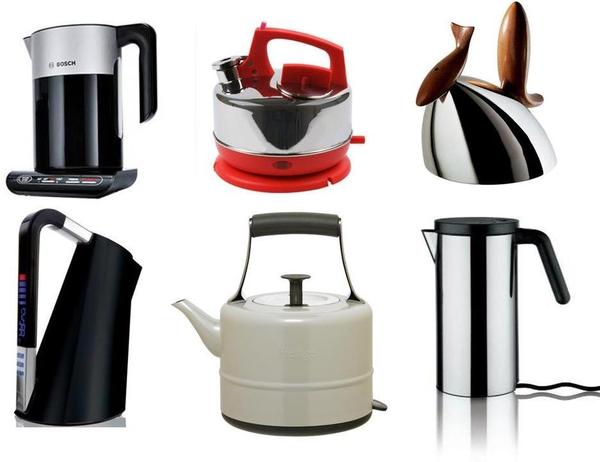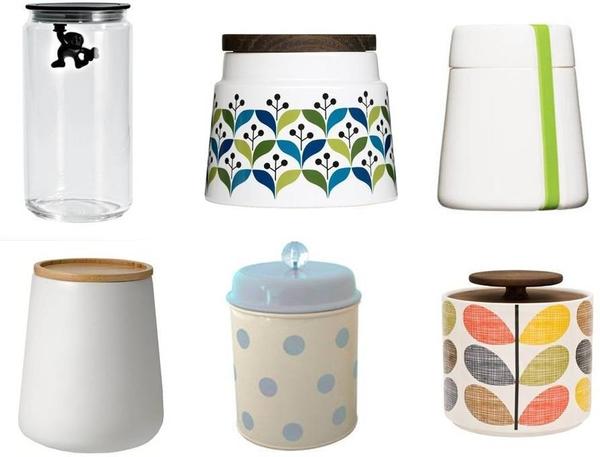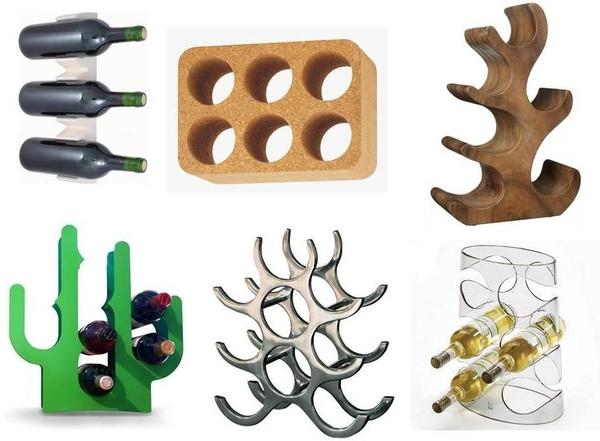Features: Kitchen
Our guide to the perfect kitchen
Check out our tips for making your kitchen the perfect heart of your home.
Renovating a kitchen can be expensive and, as one of the most important rooms in the home, it pays to get it right. From measuring to choosing lighting and appliances, read on as we take you through a step-by-step journey on how to create the perfect kitchen for you.
Measuring
When renovating a kitchen, correct measuring is essential. After all you don’t want to splash out thousands of pounds only to find the end cupboard door can’t open because there’s a wall in the way. Make sure you have a friend with you as trying to use a tape measure and write numbers down on your own will only lead to confusion. If you don’t feel confident in taking the measurements yourself, get a professional in to do it for you.
Taking pictures of the space can also help you and others working on the renovation, so take quick snapshots of each area, print them out and label with the corresponding measurements. Once you have all the details, you can start planning your dream kitchen.
Planning the layout
There are lots of different kitchen layouts to choose from but whichever you go for, you should ensure that the elements you use together are in close proximity so that the kitchen works harder for you. So, ideally, the sink should be next to the dishwasher, and you should allow a decent sized preparation area next to the hob and oven.
In terms of style, a galley-type kitchen (where units run down either side of the wall) will make the most of a narrow space, while an L-shaped kitchen maximises space using a corner of the room, perfect, for example, if you want to have an open plan kitchen and dining space.
When planning the layout also consider whether you want to incorporate a breakfast bar or kitchen island, or what you want to place in front of any windows. Remember to think about where the doors are and how they open, and where you’ll want to incorporate freestanding appliances.
It's great if you have room to include a kitchen table and chairs, alternatively a breakfast bar with stools works well if you have less space available.
Choosing a style
There is a myriad of kitchen styles available so it really does come down to personal choice. You needn’t feel pressured to choose a kitchen style which fits in with the age of your house - for example a high gloss, contemporary kitchen can look great in a period property - so don’t be afraid to experiment.
You will also need to consider if you would like fitted or freestanding furniture. Fitted furniture is best if you want to maximise every inch of space, while freestanding furniture is great for those who want to give their kitchen a bespoke feel. If you like the idea of both, try mixing and matching, by incorporating fitted base units with open wall shelves and freestanding furniture such as kitchen islands and pantries.
Think carefully about what you’re going to use your cupboards and drawers for before deciding on your configurations. For example, deep drawers are often better as a hiding place for big saucepans and dishes than cupboards, while dividers for your drawers are essential if you want to keep them clutter free.
Picking appliances
There is a plethora of kitchen appliances available, so what style you choose again comes down to personal choice. Go for the biggest fridge and freezer combination you can and, if you don’t have room for both, consider housing your freezer in the garage, utility room or basement – ditto the washing machine.
There can be a desire to buy every small appliance you can lay your eyes on but, to avoid cluttered worktops and cupboards full of once-used bread makers, try and stick to just what you need.
A colourful kettle and toaster will add a pop of colour and interest to your kitchen and remember to leave plenty of worktop space for appliances which get regular use, such as mixers and coffee machines.
Flooring and lighting
Flooring in a kitchen should be super easy to keep clean and as waterproof as possible, so it may be worth opting for vinyl, rubber flooring or tiles. Another option, which has become popular in recent years, is concrete floors - these can be expensive, but are a great option if you want to achieve an industrial-style kitchen.
Getting your lighting right in the kitchen is vital. Maximise the most of your natural light by getting rid of unnecessary window treatments and think carefully about where to put your electric light. If you have mounted wall units, installing lights under these is the perfect way to illuminate worktops, while having spotlights, which can be directed towards your hob and oven, are a must.
Pendant lights can look particularly striking when hung in a row above a kitchen island while wall lights can work well in a dining area to create an atmospheric glow.
Quick Shop: Funky Kettles
Complete your kitchen surfaces with an eternally useful, funky kettle.
Arguably the most useful appliance, the kettle serves the needs of all caffeine addicts for their morning fix and has done for years. But despite being a traditional kitchen accessory, there’s no need for designs to be outdated.
So with the help of Furnish, there’s plenty of deigns for you to choose from, ranging from super modern to cool and retro. For an iconic, Art Deco finish to your worktop, the Prestige 54314 traditional kettle from John Lewis is a great way of injecting some real vintage character into your kitchen.
If you fancy something a little more futuristic, the Bugatti black Vera kettle from Gifts with Style is fantastic for complementing a gadget-clad, high-tech kitchen.
So celebrate one of the greatest kitchen inventions by investing in a super funky kettle, to boil for a brew in style.
(Clockwise from Top) Bosch Styline kettle range, from Heal’s £72, Revival electric water kettle, from Red Candy £68, Alessi hob top kettle – Pito, from Utility £239.40, Alessi hot it kettle, from A White room £86, Prestige 54314 traditional kettle, from John Lewis £69.95, Bugatti black Vera kettle, from Gifts With Style £185.
Quick Shop: Storage Jars
Keep your kitchen clutter free with our pick of the best storage jars around
Everyone knows it’s important to be tidy in the kitchen; whether you’re a semi-pro cook or just someone who needs to keep their tea and coffee in check, we’ve put together our pick of the best storage jars.
From classic white and vintage polka dots to retro patterns guaranteed to give your kitchen a touch of swinging 60s style, there really is something for everyone.
Use them to store everything from tea and coffee to flour and pasta to make sure your kitchen remains clutter free and everything is close at hand.
From top: Alessi Gianni Storage Jar, £10.50, Utility; Retro Storage Container, £12.50, Soulful Toaster; Cammeo Jar, from £15, 95% Danish; Ceramic Round Storage Jar, £10, Occa Home; Small Domestic Goddess Storage Jar, £14.95; Orla Kiely Multi Stem Small Storage Jar, £20, Utility
Quick Shop: Wine Racks
Check out our selection of the best wine racks around
Unless you live in a mansion and have room for a wine cellar, you’re going to need a good quality wine rack. Personally, a bottle of wine rarely lasts long enough to get it in one at Furnish HQ but if you’re more restrained than us, we’ve put together a selection of the best around.
From wall-mounted sleek and FSC wood designs to a quirky cactus design to give your dining room a touch of the Wild West, we’ve got it all.
Now all you need is a decent bottle or six of plonk, a couple of wine glasses and a corkscrew and you can start the weekend countdown.
From top: Wall Mounted Wine Rack, £20, Utility; Cork Wine Rack, £35, Habitat; FSC Wooden Wine Rack, £95, John Lewis; Cactus Wine Rack by J-Me, £86, Pelican Pear; Stack Em Up Wine Rack, £95, Sweetpea & Willow; Umbra Grape Vine Wine Rack, £20, Red Candy
Orla Kiely Storage jars from Bloomsbury
Keep your kitchen organised and colourful with these storage jars by Orla Kiely from Bloomsbury. From £18.95
I've been on the hunt for some new storage jars for my kitchen for what seems like an age.
Turns out I am a extremely fussy person and haven't been able to decide on a simple thing such as kitchen caddies - well, until now that is because I have fallen for these Orla Kiely storage jars from Bloomsbury.
Available in various sizes, the jars come in a range of pattern-queen Orla's signature prints, each one as gorgeous as the next.
And as well as safely storing your tea, coffee and other essentials, these pretty jars will add a touch of retro colour to brighten up even the dullest of kitchens.
The Furnish.co.uk guide to bespoke kitchens

Too many cooks may spoil the broth but you can cook and dine in style with our guide to bespoke kitchens.
They say that the kitchen is the heart of the home, and there’s something enticing about designing a room that’s completely unique and full of personality.
Our guide leads you through all the important details that will help you create your own bespoke kitchen.
Planning
When planning a bespoke kitchen it’s important to have an idea of what you want from your space. Search online and through magazines and catalogues, and visit showrooms to see what fittings, surfaces, materials and colours will work best in your kitchen. Take the basic measurements of the area to present to the designer. Practicality is a key element, so make sure you plan for sufficient storage and work top space, keeping the style you want in mind too. Your kitchen should essentially be designed around how you like to cook and dine, whether you eat on the go, cook for a family and use the space for entertaining.
A fundamental part of planning is deciding on a budget and then sticking to it, allowing a little extra for contingencies.
Finding the right company for you
There are a multitude of bespoke kitchen companies out there. One way to determine who the right fit is for you is to see previous work they’ve done. Most will have a online portfolios so you can do some research before even meeting them. Many kitchen companies will offer a complementary design service so take your plan to them and discuss the various options. Gather a few quotes from different companies and decide which one will offer you the best bespoke kitchen design to fit your budget.
Top Tip: Roundhouse Director, Jamie Telford, says that meeting designers is a great idea: “Find someone who you can work with. A good designer will be able to guide you confidently through the whole process to arrive at your perfect kitchen. Designing a bespoke kitchen is a collaboration between you and the designer and it should be fun!”
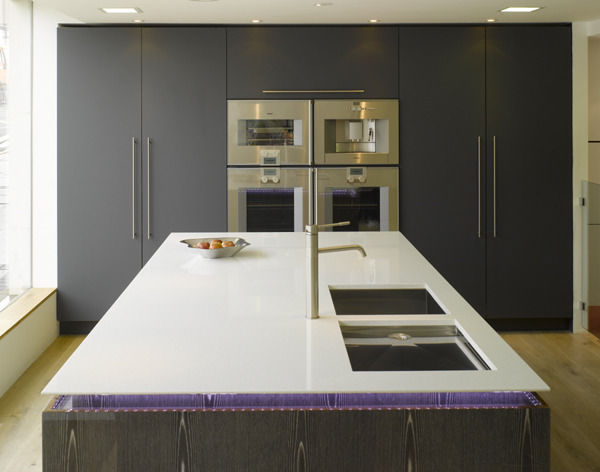
Setting the brief and budget
You will discuss options and alternatives with the designer, so be prepared to be flexible with your overall brief. The designer will find the most suitable design to fit your kitchen and your budget. Some of the main points you should cover in your brief are: what style kitchen you want; the measurements and layout; chosen colour scheme, lighting, wall and floor treatments, and your budget limit. Try not to be too swayed by the budget when you meet the designer, while top-of-the range designer taps may be something they view as an essential, you may not agree.
Top Tip: Advice from Jamie Telford, Roundhouse Director: “A new kitchen will add considerably to the value of the property but the budget should be in-line with the re-sale value.”
Choosing your kitchen
Think stylish but functional, and consider what works and what doesn’t work well in your current kitchen. Keep resale at the back of your mind because anything too personal may deter future buyers. The best types of kitchen are functional; create a “universal” room that will be versatile for everyone from children to the elderly. For efficiency, use “the work triangle” as a basis for your design, ensuring that there’s a clear space between your sink, fridge and cooker.
Take into account the amount of natural light that enters the room because too many wall-mounted cupboards can make a room darker. Colour is also an important element in the overall appearance of a kitchen; white has always been popular because it gives a clean look, however too much white can create a cold and sterile feel.
Remember the whole point of choosing a bespoke kitchen is so you can get exactly what you want. Don’t be afraid to ask your designer for something out of the ordinary or different to what they suggest – you’re the one who will have to live with the finished kitchen so it’s important it fits your style and home.
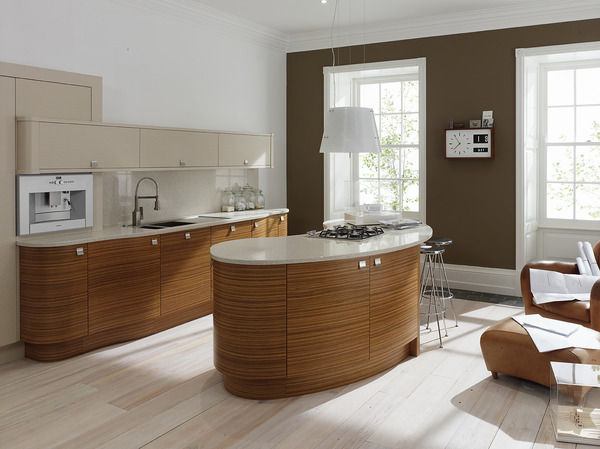
Choosing the extras
Worktops need to be highly durable, heat and stain resistant, and easy to clean. You can choose from wood, granite, stainless steel, or composite stone, and bespoke versions are available from different designers. Lizzie Beesley, conceptual designer at Metris Kitchens, commented: “The trend for material mix is gathering pace and increasingly more than one surface material is used in the kitchen to great effect. Design-wise, material mix can be used to differentiate work areas or to simply create a contrast between materials, textures and colours. If granite or stone is simply too costly to surface an entire kitchen, then consumers elect to have one area in stone, perhaps an island unit, and then the other areas in laminate.”
Roundhouse offer bespoke splashbacks in glass, stainless steel and veneers as an extension of the work top to protect the walls. However, not all bespoke kitchen companies offer tiles and flooring, so check out Fired Earth’s collection of handcrafted tiles, or Stonehouse’s natural stone tiles to complete your bespoke kitchen.
Avoiding the pitfalls
A common cause of worry is that designers will overcharge or pressurise you into paying for something you don’t want. However, as long as you have researched and found out what’s available and at what cost, you will establish a confident relationship with the designer.
Think about whether your ideal kitchen is realistically going to work in the space that you’ve got; plan around the size of your kitchen and maximise the potential it has with practical and innovative storage solutions.
Top Tip: Jamie Telford (Roundhouse Director) picks up on one of the most common mistakes: “Don’t try and cram too much into your kitchen. Don’t get carried away with your appliance list, and have so many appliances that you have no storage space.”




